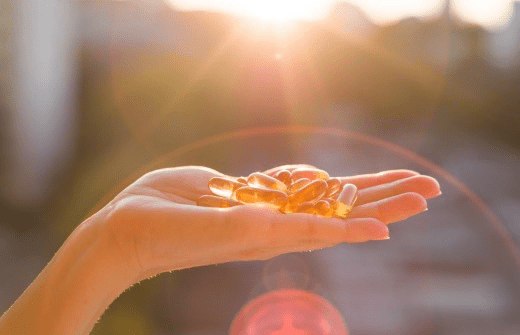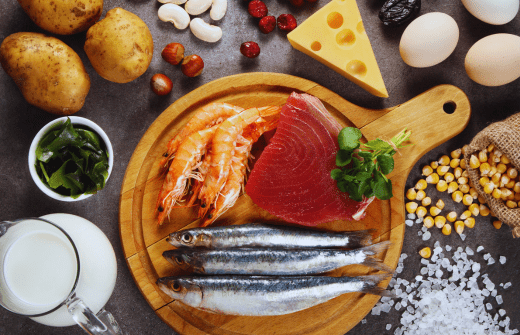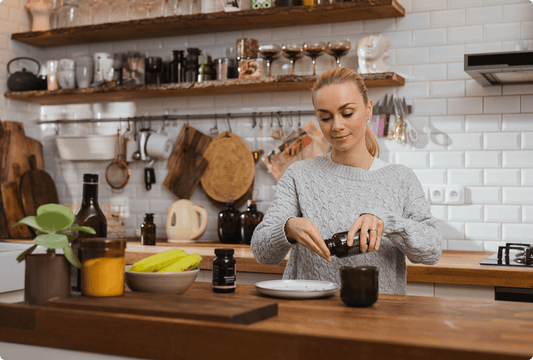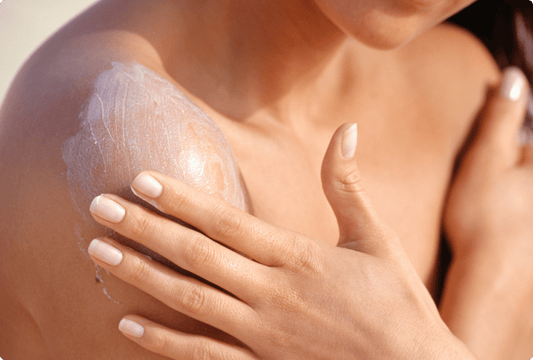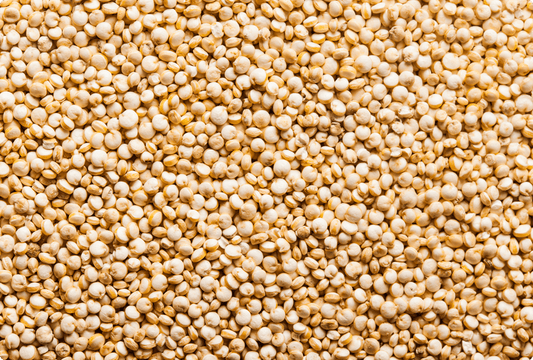The sun is important for our health – it supports vitamin D production, influences our mood, and regulates the circadian rhythm. At the same time, excessive exposure to UV radiation can accelerate skin aging, promote pigmentation, and increase the risk of skin cell damage.
In addition to using non-toxic quality sunscreens, we can also protect the skin from within – through well-chosen dietary supplements that increase its resistance to sunlight and boost the skin’s antioxidant capacity.
What will you learn in this article?
- Why and how to protect yourself from the sun?
- How does UV radiation affect the skin?
- When should you start supplementing?
- Key dietary supplements for skin protection
- Additional practical skin protection tips
- Key takeaways
Why and how to protect yourself from the sun?
Properly selected supplements can serve as effective “internal” protection against the harmful effects of UV radiation from the sun, complementing high-quality non-toxic sunscreens. When taken regularly, ideally well in advance of summer, certain natural compounds enhance the skin’s natural photoprotection and help keep the skin healthy, supple, and protected from damage caused by excessive free radical production. By combining internal support through supplementation and external protection with sunscreen, we can more effectively protect the skin from the harmful effects of sunlight and contribute to its long-term health.
The most commonly used natural compounds for skin health are antioxidants. These are abundant in brightly colored fruits and vegetables and are valued for their ability to:
-
neutralize free radicals caused by UV radiation and other external stressors,
-
reduce inflammatory responses in the skin and support its regeneration,
-
improve hydration and skin elasticity, helping it stay healthy and resilient,
-
support a healthy and even tan without unnecessary damage.
How does UV radiation affect the skin?
-
UVA rays penetrate deep into the dermis (the middle layer of the skin beneath the surface) and affect the rate of skin aging.
-
UVB rays cause redness, sunburn, and can damage DNA.
-
This leads to free radical formation and oxidative stress.
-
Damaged cells lose their ability to regenerate, pigmentation forms, and skin elasticity may decrease.

When should you start supplementing?
Skin-protective supplements should ideally be started 2–4 weeks before a period of intense sun exposure, such as before a summer holiday. For best results, begin in smaller doses in the spring. The key to effective protection is consistency and enough lead time for the active ingredients to accumulate in the skin. Gradual exposure to sunlight is also important, as it helps the skin naturally adapt to UV radiation.
Key dietary supplements for skin protection
Vitamin C
Vitamin C is a powerful antioxidant that plays an important role in protecting cellular structures from free radical damage. It also helps recycle other compounds that protect cells from oxidative stress, such as vitamin E, thereby contributing to the body’s overall antioxidant defense.
It also plays a crucial role in collagen synthesis, which is essential for firm, elastic, and healthy-looking skin. Adequate intake is especially important during periods of increased oxidative stress — such as during sun exposure, heightened stress, or when supporting immunity.
As a natural and highly bioavailable source of vitamin C, we recommend our freeze-dried organic acerola powder. This tropical cherry is known for its exceptionally high natural vitamin C content and also provides other synergistically active nutrients (provitamin A, certain B vitamins, and minerals like potassium, magnesium, calcium, phosphorus, sodium, zinc, and iron).
To support antioxidant capacity, you can take 1–3 capsules of Acerola daily (depending on the level of sun exposure).
Astaxanthin
Astaxanthin is a natural carotenoid found in wild salmon, shrimp, and the red algae *Haematococcus pluvialis*, from which it is commonly derived. Based on scientific studies, astaxanthin is considered one of the most powerful known antioxidants, with the ability to effectively protect cells from oxidative stress and UV-related damage.
Its action reaches deep into the skin structure, where it improves hydration, supports firmness and elasticity, and helps maintain a youthful appearance. Thanks to its unique effects, it can also promote an even and healthy tan.
Astaxanthin is often referred to as “internal sun protection” because it helps increase the skin’s natural resistance to UV exposure.
Vitamin E
Vitamin E is another natural compound with antioxidant properties that helps protect cells from oxidative stress. It primarily works on cell membranes, stabilizing and protecting their lipid components from damage caused by free radicals.
Thanks to these properties, vitamin E helps maintain skin hydration and elasticity. It protects cell structures and safeguards membrane lipids.
Other active forms of vitamin E include tocotrienols, which play a key role in protecting the skin from UV-induced damage and oxidative stress. Compared to the more commonly known tocopherols, tocotrienols have stronger antioxidant effects and a much higher capacity to stabilize and protect cellular membranes.
Their uniqueness lies in their ability to penetrate deeper into the skin’s structure, including the dermis – the deeper layer of the skin. This provides intense and long-lasting protection, even in areas where conventional forms of vitamin E are ineffective.
As a comprehensive antioxidant supplement, we recommend ProLife, which contains bio-quality astaxanthin together with full-spectrum vitamin E, including rare tocotrienols. The recommended basic dose is 1–2 capsules daily. In extreme situations, such as sunburn, a one-time dose of up to 6 capsules may be used.
Omega-3 Fatty Acids
Omega-3s play an important role in maintaining healthy, hydrated, and supple skin. They support the skin’s natural barrier function, enhancing its resilience to external stressors, including UV radiation. The essential fatty acids EPA and DHA also have anti-inflammatory properties and help regenerate the skin from within – especially after sun exposure.
A valuable source of omega-3s is krill oil, which is bound to phospholipids – allowing for better absorption into cell membranes, including skin cells. Additionally, krill oil naturally contains astaxanthin, which helps protect cells from sun-induced damage. This combination of bioavailable omega-3s and astaxanthin may reduce the skin's inflammatory response to sunlight, support regeneration, and slow skin aging.
To support skin regeneration, we recommend taking 2–4 capsules of Krill Oil +, depending on UV exposure.
Beta-Carotene
This highly antioxidant carotenoid, also known as provitamin A, helps protect the body from the harmful effects of free radicals. It protects cell membranes, DNA, and skin lipids from oxidative stress, which can be caused by sunlight, air pollution, or chronic inflammation.
Because of these properties, beta-carotene contributes to healthy, resilient skin and is often included in supplements with photoprotective effects. The best sources, however, are natural foods rich in beta-carotene, such as carrots, sweet potatoes, pumpkin, red bell pepper, spinach, broccoli, kale, and apricots. As beta-carotene is fat-soluble, it’s important to consume these foods with healthy fats (e.g., olive oil, avocado, nuts). Light cooking also enhances absorption (e.g., steaming or lightly sautéing), especially for carrots, pumpkin, and leafy greens.
If you’re not getting enough of this antioxidant through diet, you can opt for the multivitamin complex Daily F20 Complex.

Lycopene
Another natural antioxidant that can help protect the skin from the harmful effects of UV radiation is lycopene, a member of the carotenoid family. Lycopene is primarily found in tomatoes and other red fruits (e.g., pink grapefruit, watermelon, rose hips). Unlike some other antioxidants, lycopene’s bioavailability increases with heat – particularly when cooking tomatoes with a small amount of fat. Heat breaks down cell walls and converts lycopene into a form more easily absorbed by the body. As a result, lycopene from cooked tomatoes is much more bioavailable than from raw ones. An optimal daily intake corresponds to about 100–150 g of cooked tomatoes.
Flavonoids and Polyphenols
Flavonoids and polyphenolic compounds are powerful natural antioxidants that neutralize free radicals generated during sun exposure and from other environmental stressors. Many of these compounds also help protect collagen and elastin, structural proteins that ensure skin firmness and elasticity, helping to keep the skin healthy.
We therefore recommend incorporating foods naturally rich in these compounds into your diet:


Other Practical Tips for Skin Protection
-
Expose yourself to the sun wisely – ideally in the morning or later in the afternoon when the UV index is lower (approximately before 11:00 and after 14:00).
-
Avoid direct midday sun between 11:00 and 14:00, when UV radiation is at its peak.
-
Hydrate your skin and body – ensure sufficient fluid intake and use moisturizing products.
-
Use non-toxic mineral SPF creams – with zinc oxide or titanium dioxide, especially if you have sensitive skin.
-
Focus on post-sun exposure recovery.
Key Takeaways
-
Key supplements with protective effects on the skin include vitamin C, astaxanthin, full-spectrum vitamin E, beta-carotene, and omega-3 fatty acids.
-
It’s advisable to begin taking supplements that support skin health during summer in advance — ideally already in the spring.
-
Combine ingredients with different mechanisms of action that work synergistically (e.g., astaxanthin + vitamin E with tocotrienols + vitamin C + omega-3s).
-
Supplements do not replace sunscreen, but they reduce the risk of sunburn and support skin regeneration.
-
Don’t forget quality non-toxic sunscreens with sufficient SPF, and hydrate your skin after sun exposure – for example, with aloe vera gel.
-
Include foods rich in polyphenols and antioxidants in your diet.
Sources:
https://deannaminich.com/top-plant-foods-to-protect-the-skin-from-the-sun/
https://onlinelibrary.wiley.com/doi/10.1111/phpp.12541
https://onlinelibrary.wiley.com/doi/abs/10.1111/j.1751-1097.2004.tb00076.x?sid=nlm%3Apubmed


